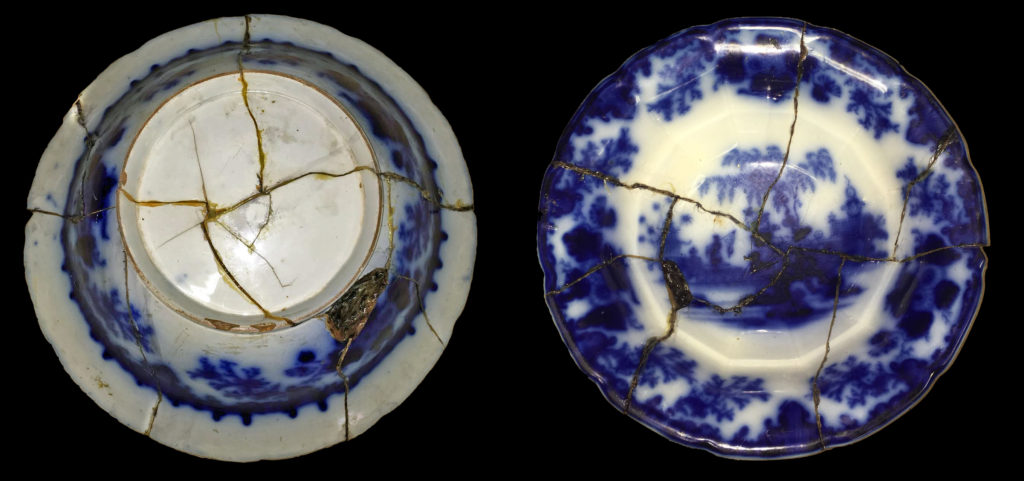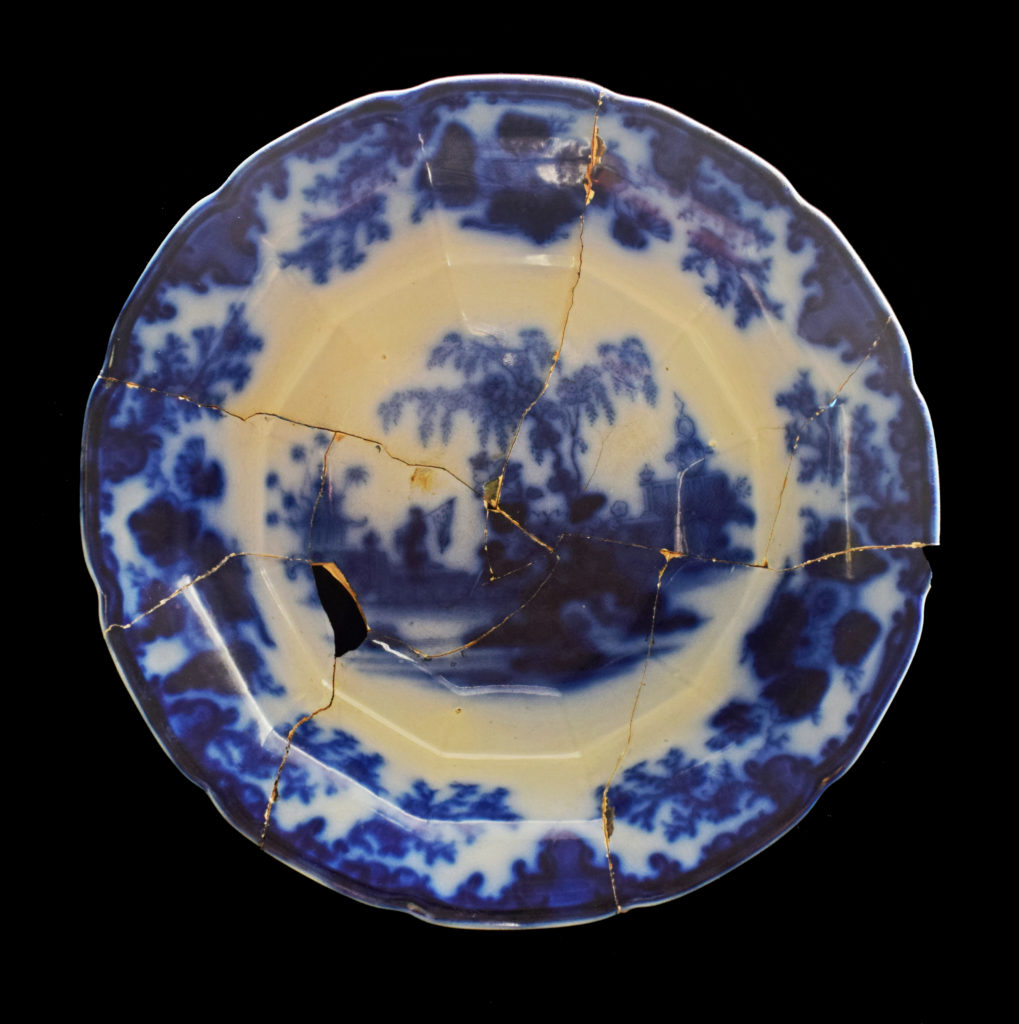By Reagan Andersen
In this month’s blog, we are highlighting a whiteware basin with a flow blue Scinde pattern from the mid-nineteenth century. The object was brought to the Dovetail lab by a curious owner from Stafford County. The vessel had once been broken into several large pieces that someone had attempted to glue back together (Photo 1). With permission from the owner, the archaeology lab at Dovetail conserved the bowl in a more appropriate and safe manner. Through a step-by-step analysis, this blog will discuss the conservation methods utilized to preserve the bowl’s integrity.

Photo 1: The Basin Before Conservation Efforts Began. Notice the giant glob of glue put in place of a missing sherd!
The first step was to remove the adhesive that had been used to refit the bowl when it originally broke. In order to do this, we had to first determine what type of glue was used and how, or if, it could be removed. With its black color, we believed the adhesive to be JB Weld—a high-temperature epoxy adhesive that is not removable. In order to get a clearer answer, we took the bowl to the Virginia Department of Historic Resources (DHR) in Richmond and with the help of Katherine Ridgway, a conservator at DHR, we received great news. It was not JB Weld, but just a normal, removable, adhesive that had been painted over with either black paint or sharpie in an attempt to blend in with the dark blue pattern. We quickly got to work removing the black paint and as much of the glue as possible with just cotton balls and acetone. However, the adhesive was not budging. The next step was to put the bowl into an acetone chamber, where the bowl is placed in a bag or container along with acetone-filled jars so that the acetone vapors can break down the adhesive and allow for separation (Photo 2). After a few weeks of being in the acetone chamber, the pieces had finally fallen apart and it was time to start removing the leftover residue and begin re-mending. In order to remove the excess residue we soaked the sherds in acetone and then used scalpels to peel the adhesive off of the fragments.
To re-mend the basin, we used Paraloid B-72: a clear, thermoplastic resin that is commonly used in conservation and restoration. It is more flexible than most other adhesives and, most importantly, it is dissolvable in acetone! It is highly important that whatever was done to the basin must be reversible; this is true with all conservation and restoration work. In the lab at Dovetail, we regularly use B-72 for labeling artifacts and mending ceramics or glass.
After several months of work, the bowl was finally finished (Photo 3). We hope to continue restoration by filling in the damaged, colorless areas with compatible paint colors. So, next time you break your grandmother’s favorite dinner plate, ask an archaeologist to repair it for you!
Any distributions of blog content, including text or images, should reference this blog in full citation. Data contained herein is the property of Dovetail Cultural Resource Group and its affiliates.


